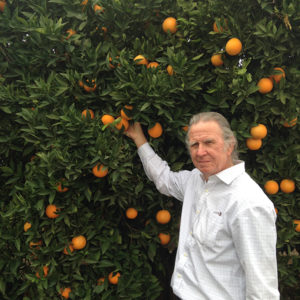
My name is Lawrence Allen. Thanks for reading this author page.
My family were mostly all orange growers. I grew up in Anaheim since the third grade, first living on my grandfather’s citrus grove – then on a citrus grove and home purchased by my folks, which was also in Anaheim. One of those groves is now part of the Disneyland parking lot.
After a tour of duty with the U.S. Army, I attended college in California and graduated with degrees in business and chemistry.
I believe I was born with a scientific and creative bent bursting out of my head, often expressed through writing and photography even as a child. An in-depth original research paper called “The Origin of Jazz” earned an A in college, inspiring me to move on to numerous other independent projects and creative designs.
In 1967, I formed Allen Publishing Company as an official vehicle to photograph, write and publish a variety of documentary subjects:
- Vanity books for private parties such as the book “Gabriella” and “Heckles of a Landlord”
- Fundraising books for organizations such as The Southern California Academy of Research Scientists
- Watercolor place mats of all the Missions of California, which were distributed throughout California by Standard Oil Company, and
- Other works for Disneyland located just a few short blocks from our facility in Anaheim
- Several schools and organizations such as the Police Academy wanted yearbooks done.
By then, the Vietnam War was raging and I wanted to help all Navy ships and military outfits to have a permanent record of their crews’ activities in Southeast Asia. Allen Publishing and I became a one-stop-shop … author, editor, designer, layout, publisher.
In many ports of call I would photograph sites, scenes and people to provide stock images the crews could use to fill their pages if they didn’t have their own. For the larger ships we often provided cameras with suggestions for where and how to take original photographs of shipboard life and liberty. I often rode on the ship during legs of the Westpac cruises to oversee the progress of the books and take individual and/or group portraits of the crews en route.
Later my staff and I did the final editing and typesetting – then layout of type, art and photographs for our lithographic camera and negative stripping crew.
A cruisebook is a collaborative effort of the highest order, more in some cases, less in others. The process started with me contacting the ship or squadron, explaining our templates of design and ideas for the crews to follow, often with suggestions for specific subjects to discuss. I created basic copy and formats they could use or expand upon.
There was a lot of latitude for creative contributions by the ships’ staff. In some cases, the ship’s crew didn’t even want to do a book, but the Captain or Executive Officer convinced them, knowing the men would value them later. In those cases, I performed nearly all the functions of author, editor, photographer, layout, and printer.
Some of the ships really had an enthusiastic and proficient cruise book staff that contributed greatly to the writing, photography and character of their cruise book.
When the war officially ended in January of 1973 with the signing of the Peace Accord in Paris, I was overjoyed that we had such a great reason to cease producing cruise books.
NASA valued the cruise books I photographed and produced for several of the Apollo recovery missions. I went on to write and/or photograph and publish another documentary book for NASA, called “Man’s Greatest Adventure”.
Following that were numerous coffee table books such as the three volumes on the building of the Trans Alaska Pipeline, a book titled “Coal A Contemporary Energy Source” for Coal Age Magazine, and “The Winemakers of the Pacific Northwest” published by Harbor House Publishing (my company).
These days I enjoy life in the Pacific Northwest (when it’s not raining too much), and my writing is focused more on personal interest and introspection.